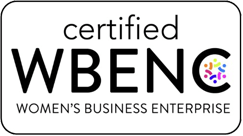Can you use social media listening tools to find positive and negative mentions of your brand and improve your marketing if you’re in the life sciences and biotech industries? Find out by reading this blog!
If you are a marketer looking to optimize the marketing around your life sciences product or service — or an entrepreneur passionate about branding strategies — you might have seen the term ”Social Listening” pop up more and more in recent years.
So what exactly is everyone talking about?
The Definition
Social Listening is the process of tracking multiple social media platforms for any mention of your brand, service, product, and even competitors. This allows you to monitor, analyze, and get involved in any thread or conversation related to them on social media. It is an essential tool to help your audience research.
Patrons, shop owners, service providers, and pretty much everybody working in retail have long kept their ears open to any feedback coming from the customer. Lately, big pharma names and biotech brands have adopted this model too.
Is the service too outdated? Is the advertising misleading? Would more audiences flock to buy the product if the launching had a bigger impact? These are just a few examples of insights that your customers can help you with. Listening to their needs will allow you to cater a better experience for them.
With the advent of social media, this process has become a whole lot easier. Listening tools are more complex than ever, and social platforms are so diversified that each industry can find its target audience. But which are the best tactics to use? And how does it work?
Let’s see…
The Process
Social listening is a two-step operation.
Survey
First, you need to survey the various media channels you consider relevant for mentions of your business, competitors, and any other keywords related to your brand.
Take Action
Then, use what you’ve learned to take action. This could be something as simple as posting an acknowledging comment to a satisfied customer’s review. Or it could be as big as changing your entire marketing strategy.
So how is this different from SMM (Social Media Monitoring)? The concepts are similar but are set apart by a few key aspects.
Social media monitoring simply collects data on metrics such as brand mentions, relevant hashtags, competitor mentions, and industry trends and is a great tool for monitoring ROI or A/B testing campaigns. The Social Listening process begins when you begin applying the gathered intel.
While SMM analyzes metrics such as engagement rates and number of mentions, social listening is a way to look behind the numbers and interpret the mood beyond the data. This helps you stay in touch with people’s opinions about your product and how they feel about it in comparison with other competing brands on the market.
This “online mood” even has a name, Social Media Sentiment. And keeping tabs on it is a huge part of social media listening. It not only helps you give a swift response to any comment (positive or negative), but it also allows you to keep your marketing and development efforts on track by adjusting to your client’s needs.
So social media listening is a two-way street. It’s about analyzing collected data as well as using it to improve your marketing strategy and…
Interacting With Customers
Social media listening tools create plenty of opportunities to engage with your consumers and find out what they like best or how they really feel about your brand.
Maybe you have someone tweeting about how much they loved your product or reaching out to you directly on social media with a request.
Of course, you might have a support e-mail or hotline available, but many consumers will just give a shout-out on the social media platform they are most familiar with.
This is a good occasion to both resolve their issue and generate some goodwill among your followers. If the situation permits a little humor, this also opens up the opportunity to create some viral-worthy material and boost engagement towards your extended target.
Best Social Media Listening Tools

The best thing about social listening is there are numerous tools — including free ones — that can help you get started. Some of the ones worth mentioning are:
Although not necessarily life sciences specific, when used right, all these social media listening tools can generate valuable key findings any brand can benefit from.
Here are some examples:
Who Your Audience Is
Many digital influencers in the life sciences field are physicians and professors of medicine in their 40s and 50s. Since most of them practice in Chicago, Los Angeles, and Philadelphia, consider targeting these specific cities and partnering with them to help your product or service get better notoriety.
Types Of Content Engaged
Digital influencers in the life sciences are usually very vocal and provide personal comments and experiences regarding the products and services they tried.
Identify influencers that fit your area of expertise and look at what they share on their social media profiles, especially on Twitter or Linkedin, to understand key topics of interest in your community.
Anticipated Perceptions Of Product To Be Launched
Many influencers, especially those who are also physicians, can anticipate the perceptions of a product about to be launched.
Perceptions Of Competitor Product On Market
Via their conversations, influencers can be a great source of valuable information about your competitors. Pay attention to what is being discussed and use these findings to perfect your products and services.
Besides finding out what the marketplace thinks about your brand, you should always be up to date with what your competition is up to, and how well it is received. Are they preparing new marketing campaigns? Developing new products? Is the press enthusiastic about it, or are they having a field day tearing it apart?
Averting a Crisis
Of course, engagement is only beneficial when it comes via positive social sentiment. Social listening allows you to track which posts are generating positive feedback around your brand — and which aren’t.
Look for the reasons behind the engagement and construct your strategy accordingly.
Social media listening tools are also very efficient in both solving and preventing PR disasters. If the sentiment is really down, you can come forth and address the issue right away by deleting the insensitive post or apologizing publicly online.
Social media listening tools are also very efficient in both solving and preventing PR disasters. If the sentiment is really down, you can come forth and address the issue right away by deleting the insensitive post or apologizing publicly online.
Getting Relevant Insights
Monitoring
By monitoring public online conversations, you gain access to insights that help you paint a better picture of what works for your customer and what doesn’t.
Are more customers signaling an issue? You should have that checked. Is making a few tweaks to your product all you need to do, or is it back to the old drawing room?
Whatever you decide, make sure you announce any change through a thought-out marketing campaign. Especially when it comes to healthcare, you must be transparent and show that your brand is willing to mold itself to the needs and wellbeing of your customers.
Influencers
As hinted above, you can also collaborate with influencers to reach a broader audience. As the name suggests, they can wield a heavy influence on how your brand is perceived among their followers.
If you have influencers genuinely endorsing your product, you can invite them to become brand advocates. They can help you communicate clinical trial information, announce new product launches or discuss the benefits of using your devices or products.
Keywords
By using social listening tools, you will learn what keywords to add to your ever-expanding list. So, of course, you’ll start with your brand and product names (including a variety of misspellings), then continue with your competitor’s brand and product names. Follow up with your slogan and main handles, plus industry buzzwords.
In time, you will learn what kind of words people tend to use when they talk about your brand, and you can add them to an ever-growing list of keywords. The name of your spokesperson, CEO, hashtags related to your product or the industry in general, and common abbreviations…feel free to add them to the mix.
You will also gain a clearer sense of what insights are more useful and should be prioritized.
Turn On The Antenna
Once you enter the market, take advantage of social media listening tools to keep your antennas open. Customers and potential customers will discuss your product. Consider them an unbiased focus group. Listen to their needs and embrace their demands.
For more great insights into life sciences digital marketing, follow our blog and, of course, don’t hesitate to get in touch. We are here to help with anything you may need regarding life science marketing, product launch consulting, market development strategy, and much more.




